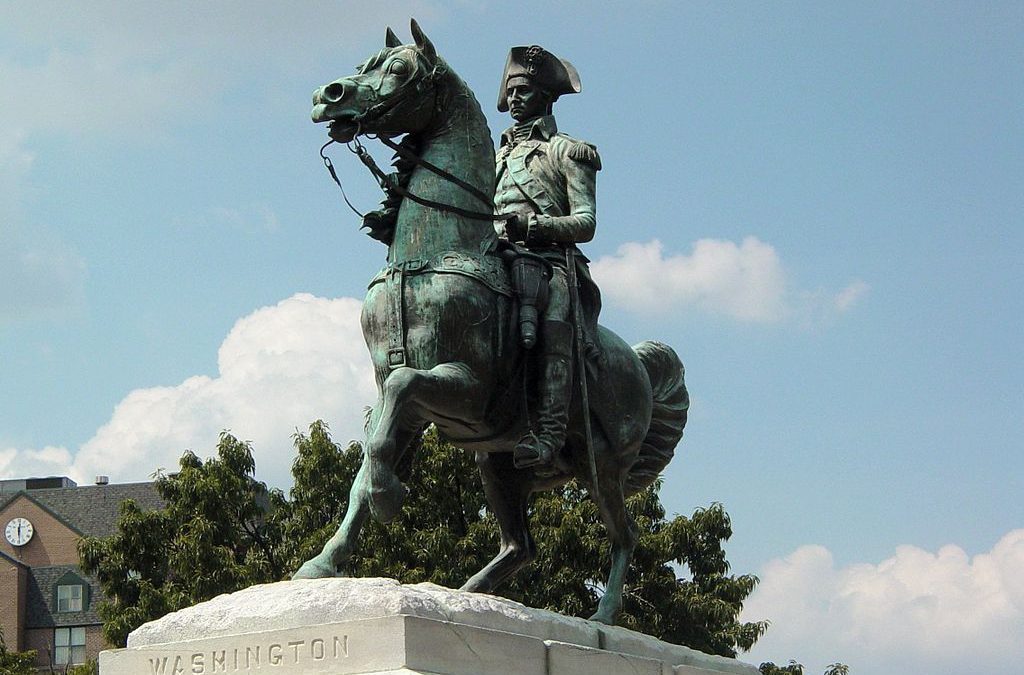Washington’s geographical center is saturated with Greek revival columns that tower over thousands of scurrying suits. Plaques, giant obelisks, and statues remind passersby that decisions of great political weight are and have always been made on the very ground they tread on.
Of the 100-odd monuments in the District dedicated to individuals, fewer than 10 depict representatives of non-political significance. Scientist Albert Einstein, father of photography Louis Daguerre, poet Henry Wadsworth Longfellow, and author and intellectual Carter Woodson are some of the lucky few to achieve physical remembrance in a sea of colonels, generals, presidents, legislators, and judges.
Monuments stand at the nexus of art and architecture—they beautify and diversify the urban landscape and serve as practical reference points. Unlike other types of art, they are mostly permanent and unavoidable. Although not every encounter with a statue on the street will send you into a deep analysis and appreciation of its subject, the overall effect is significant in our conception of who and what is important in defining American history and identity today.
What does it mean for a city and a capital to define the national narrative almost exclusively through politics? As even the most cursory examination of U.S. history shows, there is no shortage of authors, scientists, artists, and intellectuals who made a significant impact on modern-day American society. And yet, hardly any of them share the D.C. streets with the imposing iron equestrians of the American Revolution and the Civil War.
The choice of who is and isn’t memorialized in the built environment is not an issue of lacking options. Of all the people whose life’s work inspired societal change in the nearly 250 years of this country’s existence, only a select few are rendered immortal through stone. When thinking of the most important politicians in American history, reponses roll off the tongue—Washington, Jefferson, Lincoln, Roosevelt. There is disagreement on the level of admiration these people deserve, but their significance to the national mythology is consensus. Images of unanimously recognized historical literary and cultural figures, however, are much harder to conjure.
In Russia, there is an expression, “Pushkin is our everything.” It refers to the supreme legacy of writer Alexander Pushkin on Russian literature but also represents a broader tradition of celebrating and memorializing cultural figures as significant components of what it means to be Russian. As a first-generation immigrant, my own Russian identity is grounded in the books, movies, and music I consumed as a child and continue to explore today.
But who is the American Pushkin, Tolstoy, or Dostoevsky? Mark Twain, Ernest Hemingway, Maya Angelou, Emily Dickinson? All have a claim to cultural centrality, but none of them have quite the same name recognition and embodiment of national identity as their Russian counterparts, and none of them have statues in the U.S. capital. Ironically, Pushkin does.
We can only speculate as to why the United States doesn’t have the same universal cultural canon as many other countries do. Its comparative youth as a nation, its lack of a hereditary aristocracy with a tradition of art patronage, its diversity, and its vast size are all potential factors. But insofar as emphasis on culture in a country is related to government sponsorship and encouragement of cultural education, the lack of both in this country is clear.
While many countries have ministries of culture, the United States has never been able to cement access to art as a duty of the government. The National Arts Commission, created in 1859, was disbanded after two years, and even in the height of New Deal visions of public welfare, proposed legislation to create a Department of Science, Art, and Literature never got beyond committee. Today, the National Endowment for the Arts receives four thousandths of one percent of the federal budget, constantly at risk of suffocation by conservative politicians.
Thus, monuments that populate the public spaces of this city must be approved by the government, but they are not initiated or fully financed by it. In D.C., the National Capital Memorial Advisory Commission was founded in 1986. While it oversees a complex, 24-step process for memorial approval, it does not have the funds to propose or build monuments on its own. Even the memorial to Martin Luther King Jr., a figure of unequivocal importance, was barely sponsored by the government. Instead, 110 of the 120 million dollars it cost to build the memorial were provided by a collection of large donors—General Motors, Tommy Hilfiger, the Gates Foundation, Disney, the NBA, NFL, the National Association of Realtors, and filmmakers George Lucas and Steven Spielberg.
In the United States, there has always been a fear about the authoritarian possibilities of a government tasked with dissemination of cultural knowledge, which raises the question of who can be trusted with the commission of historical memory. Is a world where public interest in culture must be driven by financially-motivated companies really the best we can ask for? In Europe, the purpose of government culture ministries is to affirm access to art as a right of all citizens, just like health, social welfare, and education.
The monumental emphasis on political actors as drivers of American history doesn’t just devalue certain professions and spheres; it also inadvertently excludes the identities related to them from the historical narrative. Women have been both legally and socially barred from political participation, not to mention legitimate political leadership, for the majority of this country’s history. Thus, their contributions to society often manifest in other ways—through performance, social reform, teaching, and of course, the ever-ignored but invaluable labor of human reproduction.
In 1929, Daisy Calhoun, a mother and founder of the Woman’s Universal Alliance, advocated for a Mothers’ Memorial in Washington. “The world has memorialized fighters, thinkers, monarchs, prophets, and generals,” she said. “But as yet no monument to the mother genius had been raised, beautified by art and sculpture, to proclaim the debt each mortal owes to the woman who risked her own life to give life.” A Mothers’ Memorial was never built, until 2013, when the proposal for the Gold Star Mothers Memorial was authorized for construction. So, mothers just might plant their iron feet in the swampy foundations of the District, but not all of them. The memorial reserves its dedication for women who produce members of the U.S. military, thus impressively turning a monument to motherhood into yet another celebration of political domination.
Monuments reflect the perspective of those who rule and their desire to make those who are ruled see the world the same way. It doesn’t take long to realize that the statues of D.C. invoke the official American values of liberalism, democracy, and nationalism. But equally important is the type of person memorialized. No country was built completely by generals and statesmen, though a stranger in this city might very well think so.
Of course, the separation between the cultural and political realm is blurry. Writers, artists, philosophers, and educators cannot be separated from the political regimes in which they existed. In fact, most of them either actively critiqued or reinforced the power structures of their time. But this makes their absence from our capital’s physical memory even more puzzling. If we define American-ness through politics, how can we ignore the role of cultural production in political change?
Many have made the argument that in today’s globalized, multicultural world, shared national and cultural narratives fail to represent all of a society’s members, and thus, their physical manifestations are useless. And they certainly have a point. But as long as we inhabit physical communal spaces, their content will inform some aspect of how we perceive ourselves and our surroundings. Statues, buildings, and everything else we see on the street is itself a part of culture, and we shouldn’t ignore their ability to enrich and shape our society. So, we should acknowledge and remember non-political drivers of history, and hopefully they will start to traverse the 24-step memorialization process, solidifying their legacy in our streets, squares, and minds.
Image Credit: Ben Schumin





